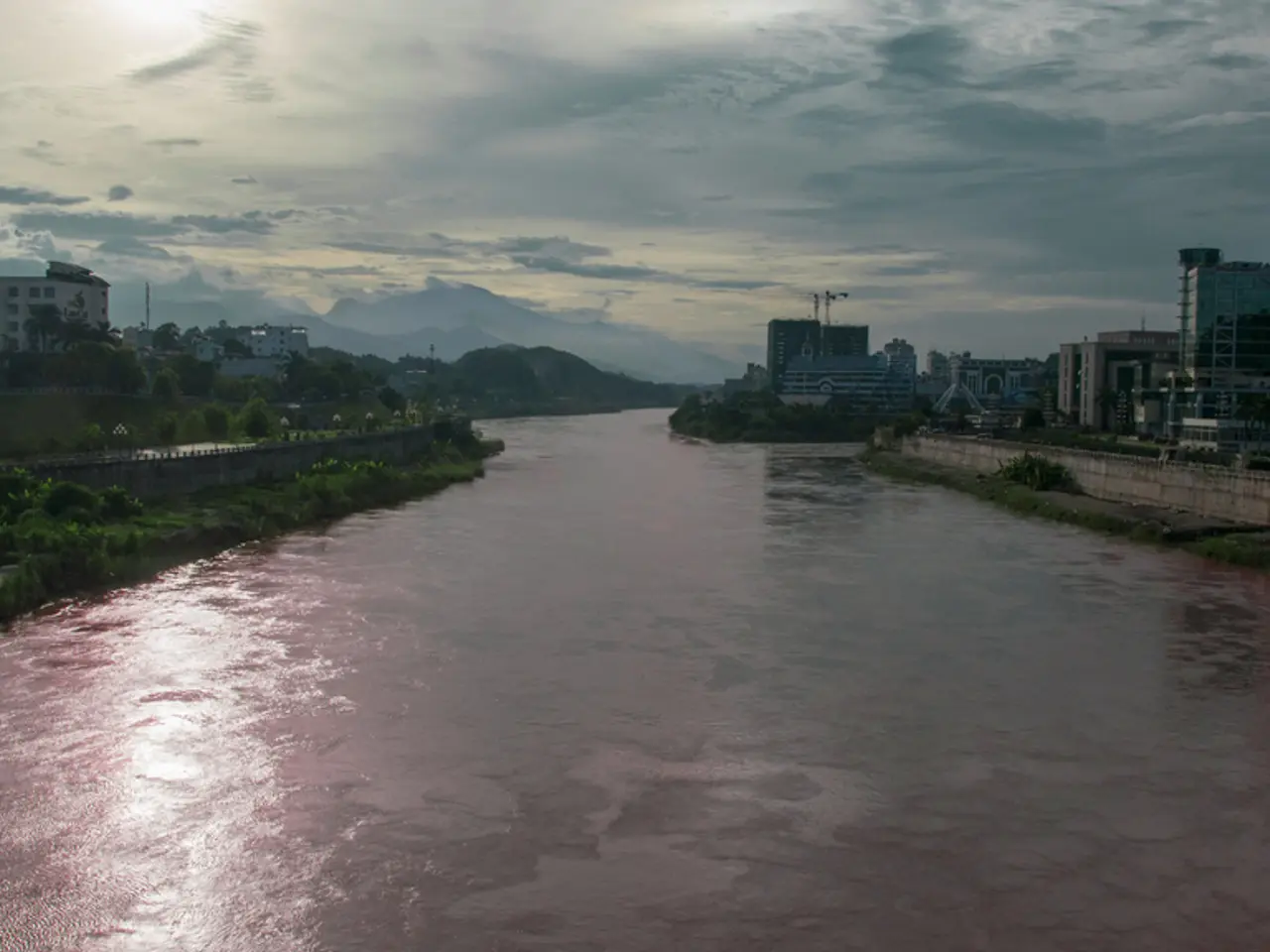Restoration Effort for 50 Uttar Pradesh Rivers Intends to Rejuvenate Ecosystem
Reviving Rivers in Uttar Pradesh: A Step Towards Sustainable Living
In an inspiring development, the state of Uttar Pradesh is making strides in reviving and restoring its rivers, with significant progress being made under initiatives like Namami Gange and MGNREGA. These efforts have shown promising results for rivers such as the Noon, Kukrail, Tilodki, Pili, Belan, and the Ganga, with improvements in groundwater levels, increased water availability for agriculture, and boosted rural employment [1][2].
One of the most notable success stories is the revival of the Noon River in Kanpur Nagar. A 48-km stretch that had previously suffered from pollution, sedimentation, and unauthorized encroachments has seen a remarkable transformation. This project combined traditional knowledge with modern techniques, using satellite imagery and drone surveillance, to reinstate the river’s natural course. The restoration has resulted in improved groundwater levels, the creation of wildlife sanctuaries, and the employment of thousands of local workers in manual labor, thereby boosting rural employment and environmental stewardship [2].
Similar approaches have been applied across many smaller rivers and streams in over 1,000 Ganga Gram Panchayats, enhancing water conservation and rural water security through the construction and repair of ponds and other water storage infrastructure [1].
For the Ganga, Uttar Pradesh’s efforts are part of the broader Namami Gange programme, aiming to improve water quality through pollution control, sewage treatment plant (STP) capacities, and continuous monitoring. Although challenges remain, such as requiring increased STP capacities and managing continuous pollution inflows, the government has pushed for comprehensive watershed management and institutional collaborations to improve river health [1][3].
However, the deeper challenge for river rejuvenation in Uttar Pradesh is not just a matter of government-led campaigns, but a shift in mindset towards water. The contradiction in Uttar Pradesh is that rivers are worshipped yet routinely polluted. True rejuvenation will depend on whether communities can reimagine their relationship with water, from something to be exploited or forgotten to a living presence that sustains, connects, and reflects communities [4].
These projects also aim to enhance long-term water retention and flood prevention. Afforestation drives at 894 designated sites, particularly along riverbanks, are helping stabilize soil, reinforce embankments, and support local biodiversity [5].
Uttar Pradesh is facing challenges in keeping its rivers clean, particularly the Hindon River and the Ganga. The National Green Tribunal (NGT) has reprimanded the Uttar Pradesh government for failing to address pollution in the Hindon River [6]. To combat this, the state has launched the 'Buffer Mein Safar' scheme to boost ecotourism, hoping to generate revenue while promoting sustainable practices [7].
In conclusion, these river restoration efforts have created tangible hydrological, ecological, and socioeconomic improvements in the targeted rivers in Uttar Pradesh. However, the journey continues, especially for major rivers like the Ganga where pollution control remains complex. The success of these initiatives underscores the potential for sustainable river management to improve rural livelihoods, conserve biodiversity, and promote a healthier environment for all.
References: [1] Times of India. (2022, February 18). Uttar Pradesh revives 1,011 Ganga Gram Panchayats, 3,363 km of rivers. Retrieved from https://timesofindia.indiatimes.com/city/meerut/uttar-pradesh-revives-1011-ganga-gram-panchayats-3363-km-of-rivers/articleshow/89081215.cms
[2] Down To Earth. (2022, May 15). Kanpur's Noon river: A success story. Retrieved from https://www.downtoearth.org.in/blog/water/kanpurs-noon-river-a-success-story-79539
[3] The Hindu. (2022, February 18). Namami Gange: Uttar Pradesh to revive 50 rivers, construct 3,388 ponds. Retrieved from https://www.thehindu.com/news/national/uttar-pradesh-to-revive-50-rivers-construct-3388-ponds/article37806324.ece
[4] The Wire. (2022, February 18). Reviving Uttar Pradesh's rivers: The contradiction of worship and pollution. Retrieved from https://thewire.in/environment/reviving-uttar-pradeshs-rivers-the-contradiction-of-worship-and-pollution
[5] The Times of India. (2022, February 18). Afforestation drives in Uttar Pradesh to help rivers. Retrieved from https://timesofindia.indiatimes.com/city/meerut/afforestation-drives-in-uttar-pradesh-to-help-rivers/articleshow/89081215.cms
[6] India Today. (2022, February 18). NGT slams Uttar Pradesh government for failing to address Hindon River pollution. Retrieved from https://www.indiatoday.in/india/story/ngt-slams-uttar-pradesh-government-for-failing-to-address-hindon-river-pollution-1845133-2022-02-18
[7] The Hindu. (2022, February 18). Uttar Pradesh to promote ecotourism along Ganga, Yamuna. Retrieved from https://www.thehindu.com/news/national/uttar-pradesh-to-promote-ecotourism-along-ganga-yamuna/article37806324.ece
- Embracing sustainable living, locals in Uttar Pradesh have witnessed positive environmental implications resulting from work in environmental science, such as the revival of the Noon River in Kanpur Nagar.
- As part of the home-and-garden industry, the restoration of rivers in Uttar Pradesh includes the construction and repair of water storage infrastructure, which has significantly contributed to water conservation and rural water security.
- The success of climate-change initiatives, like those implemented in Uttar Pradesh, demonstrates the potential for environmental science and sustainable-living practices to conserve biodiversity, improve rural livelihoods, and promote a healthier environment.




